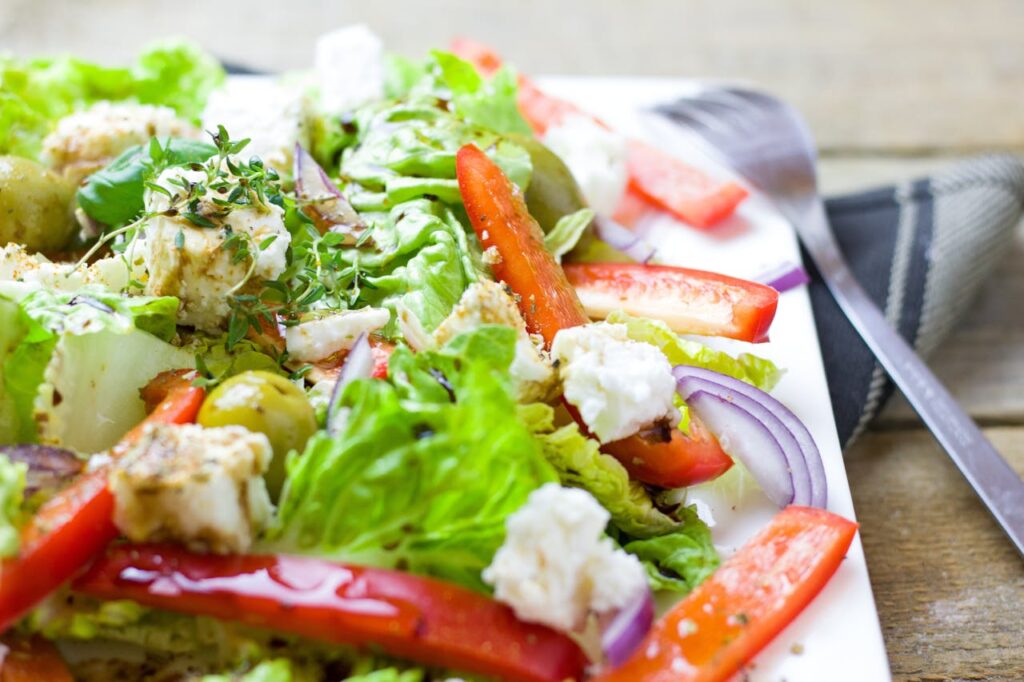Are you a woman who is looking to lose weight and wondering what the recommended portion sizes and calorie limits are? Well, look no further! In this article, we will explore the guidelines for women during weight loss, providing you with valuable information to help you achieve your goals. Whether you’re just starting your weight loss journey or looking to make adjustments to your current plan, understanding the right portion sizes and calorie limits is essential. So, let’s dive in and discover the key recommendations to support you on your weight loss journey!
Recommended Calorie Intake for Weight Loss
Losing weight requires careful attention to your calorie intake. To determine the right calorie intake for weight loss, you need to consider various factors such as your age, height, weight, activity level, and metabolic rate. By understanding and monitoring these factors, you can create a meal plan that supports your weight loss goals.
Determining Calorie Intake
The first step in determining your calorie intake for weight loss is to calculate your Basal Metabolic Rate (BMR). This is the number of calories your body needs at rest to maintain basic functions such as breathing and digestion. Once you have your BMR, you can multiply it by an activity factor that corresponds to your level of physical activity. This will give you an estimate of the number of calories you need to maintain your current weight.
To lose weight, you need to create a calorie deficit by consuming fewer calories than your body needs. It is generally recommended to aim for a calorie deficit of 500-1000 calories per day to lose 1-2 pounds per week, which is considered a safe and sustainable rate of weight loss.
Factors Affecting Calorie Requirements
Several factors affect your calorie requirements for weight loss. Age, for example, plays a role in determining your metabolism. As you age, your metabolism tends to slow down, which means you may need to consume fewer calories to achieve weight loss. Height and weight also influence your calorie requirements, as larger bodies generally require more calories to function. Additionally, your activity level and current metabolic rate impact how many calories you burn throughout the day.
Recommended Daily Calorie Limit
The recommended daily calorie limit for weight loss varies depending on individual factors. However, for most women looking to lose weight, a calorie intake of around 1200-1500 calories per day is often considered a good starting point. This range provides enough nutrition and energy while still creating a calorie deficit for weight loss. It is important to note that extremely low-calorie diets can be unhealthy and unsustainable, so it is crucial to find a balance that works for you.
Importance of Portion Control
Portion control is an essential component of successful weight loss. It involves understanding and managing the amount of food you consume during meals and snacks. By practicing portion control, you can maintain a healthy calorie intake, prevent overeating, and promote weight loss.
Understanding Portion Sizes
Understanding portion sizes can be challenging, as many people are used to eating larger portions than what is necessary for their bodies. Using visual cues and measuring tools can be helpful in recognizing appropriate portion sizes. For example, a serving of protein such as chicken or fish is typically about the size of your palm, while a serving of carbohydrates like rice or pasta should be around the size of your clenched fist.
Benefits of Portion Control
Practicing portion control offers numerous benefits beyond weight loss. It can help improve digestion, reduce the risk of overeating, maintain stable blood sugar levels, and promote overall balanced nutrition. Additionally, portion control encourages mindful eating and helps you develop a healthier relationship with food.
Recommended Portion Sizes for Weight Loss
When it comes to portion sizes for weight loss, it is important to focus on a balanced and varied diet. Here are some recommended portion sizes for different food groups:
Protein
Aim to include a palm-sized serving of lean protein in your meals. This can be chicken, turkey, fish, tofu, or legumes. Protein is essential for muscle repair and growth and helps you feel satisfied after meals.
Vegetables
Fill half of your plate with non-starchy vegetables such as broccoli, spinach, peppers, and cauliflower. These low-calorie, nutrient-dense foods are rich in vitamins, minerals, and fiber, providing satiety and nourishment.

Whole Grains
Limit your whole grain portions to around the size of your clenched fist. Whole grains like quinoa, brown rice, and whole wheat bread provide necessary carbohydrates and fiber to fuel your body and maintain steady energy levels.
Fruits
Enjoy a variety of fruits, aiming for around two palm-sized servings per day. Fruits are packed with essential vitamins, antioxidants, and fiber, while offering a natural sweetness to satisfy your cravings.
Healthy Fats
Include a small serving of healthy fats in your meals, about the size of your thumb. Avocado, nuts, seeds, and olive oil are excellent sources of healthy fats that are crucial for brain health and nutrient absorption.
Creating a Well-Balanced Meal Plan
Creating a well-balanced meal plan is key to achieving sustainable weight loss. Here are some considerations when planning your meals:
Meal Planning Basics
Start by identifying your calorie and nutrient needs based on your weight loss goals. Then, divide your daily calorie limit into three main meals and two snacks. This will help you spread your calorie intake evenly throughout the day and prevent excessive hunger.
Creating a Calorie-Deficit Meal Plan
To create a calorie-deficit meal plan, focus on reducing portion sizes while maintaining a balance of macronutrients. Distribute your calories between protein, carbohydrates, and healthy fats to ensure you are getting all the essential nutrients your body needs.
Incorporating Macronutrients
Protein, carbohydrates, and fats are the three macronutrients that should be included in your meal plan. Aim for a balanced combination of these nutrients in each meal to keep your body nourished and satisfied.
Choosing Nutrient-Dense Foods
Incorporate nutrient-dense foods such as whole grains, lean proteins, fruits, and vegetables into your meal plan. These foods provide essential vitamins, minerals, and fiber without adding excessive calories. By choosing nutrient-dense options, you can maximize your nutrition while managing your calorie intake.
Eating Mindfully
Mindful eating is a practice that involves paying full attention to the eating experience and being aware of your thoughts, feelings, and physical sensations related to food. By practicing mindful eating, you can develop a healthier relationship with food and make more conscious choices that support your weight loss goals.
Mindful Eating Techniques
To eat mindfully, try these techniques:
- Slow down: Take your time to enjoy each bite and savor the flavors and textures of your food.
- Focus on the present moment: Avoid distractions such as screens or multitasking while eating. Instead, concentrate on the experience of eating.
- Listen to your body’s hunger and fullness cues: Pay attention to your body’s signals of hunger and fullness. Eat when you are hungry and stop when you are satisfied, but not overly full.
- Engage your senses: Notice the aroma, appearance, and taste of your food. This can enhance your food enjoyment and create a sense of satisfaction.
Adjusting Portion Sizes for Individual Needs
Portion sizes may need to be adjusted for individual needs based on various factors. Here are a few considerations:
Age
As we age, our caloric needs tend to decrease. It is important to reassess portion sizes and calorie intake as you get older to support your changing metabolism.
Height and Weight
Taller individuals and those with more muscle mass generally require more calories than shorter individuals. Adjust portion sizes accordingly to meet your body’s unique needs.
Physical Activity Level
Those who engage in regular physical activity may need additional calories to fuel their workouts. Consider increasing portion sizes or incorporating healthy snacks to support your activity level.
Metabolic Rate
Metabolic rate refers to the rate at which your body burns calories at rest. If you have a slower metabolic rate, you may need to adjust portion sizes or reduce calorie intake slightly to support weight loss.
The Role of Exercise in Weight Loss
Exercise plays a crucial role in weight loss by helping to burn extra calories, build muscle, and increase overall energy expenditure.
Calorie Burn through Exercise
Different types of exercise can help you burn calories at different rates. Higher intensity activities such as running, cycling, or HIIT workouts tend to burn more calories per minute than lower intensity exercises like walking or yoga. However, any form of physical activity contributes to your overall calorie burn.
Combining Exercise with Portion Control
To optimize weight loss, it is beneficial to combine regular exercise with portion control. By creating a calorie deficit through portion control and then adding exercise to the equation, you can increase your weight loss potential while improving overall fitness and well-being.
Monitoring Progress and Making Adjustments
Monitoring your progress is crucial to staying on track with your weight loss goals. Here are a few strategies to help you monitor and make adjustments as needed:
Setting Realistic Goals
It is important to set realistic and achievable weight loss goals. Focus on slow, steady progress rather than expecting immediate results. Remember that sustainable weight loss is a journey, and consistency is key.
Tracking Food Intake and Progress
To monitor your calorie intake, consider keeping a food diary or using a mobile app to track your meals and snacks. This can provide valuable insights into your eating habits and help you make any necessary adjustments to portion sizes or food choices.
Adjusting Portion Sizes and Calorie Intake
If you find that your progress has stalled or you are not achieving the desired weight loss, it may be necessary to adjust your portion sizes or calorie intake. Gradually reducing portion sizes or making slight tweaks to your calorie deficit can help jumpstart your progress.
You May Also Like
Importance of Seeking Professional Guidance
Seeking professional guidance, such as consulting with a registered dietitian or nutritionist, can greatly benefit your weight loss journey. These experts can provide individualized recommendations and guide you towards a healthier eating plan that suits your specific needs and preferences.
Consulting with a Registered Dietitian or Nutritionist
A registered dietitian or nutritionist can assess your unique needs, preferences, and goals to create a personalized meal plan. They can also provide guidance on portion control, meal timing, and food choices to support your weight loss journey.
Individualized Recommendations
Everyone is different, so it is important to receive personalized recommendations for your weight loss goals. A professional can help you determine the appropriate portion sizes and calorie intake based on your specific circumstances.
Support and Accountability
Working with a trusted professional can provide you with valuable support and accountability throughout your weight loss journey. They can offer guidance, answer your questions, and help you stay motivated and focused on your goals.
Conclusion
Achieving sustainable weight loss requires a multifaceted approach that includes portion control, mindful eating, regular exercise, and professional guidance. By understanding and implementing recommended portion sizes and calorie limits, you can make informed choices that support your weight loss goals. Remember, this journey is about empowering yourself to take control of your health and well-being. With determination, consistency, and the right strategies, you can achieve the healthy and sustainable weight loss you desire.




